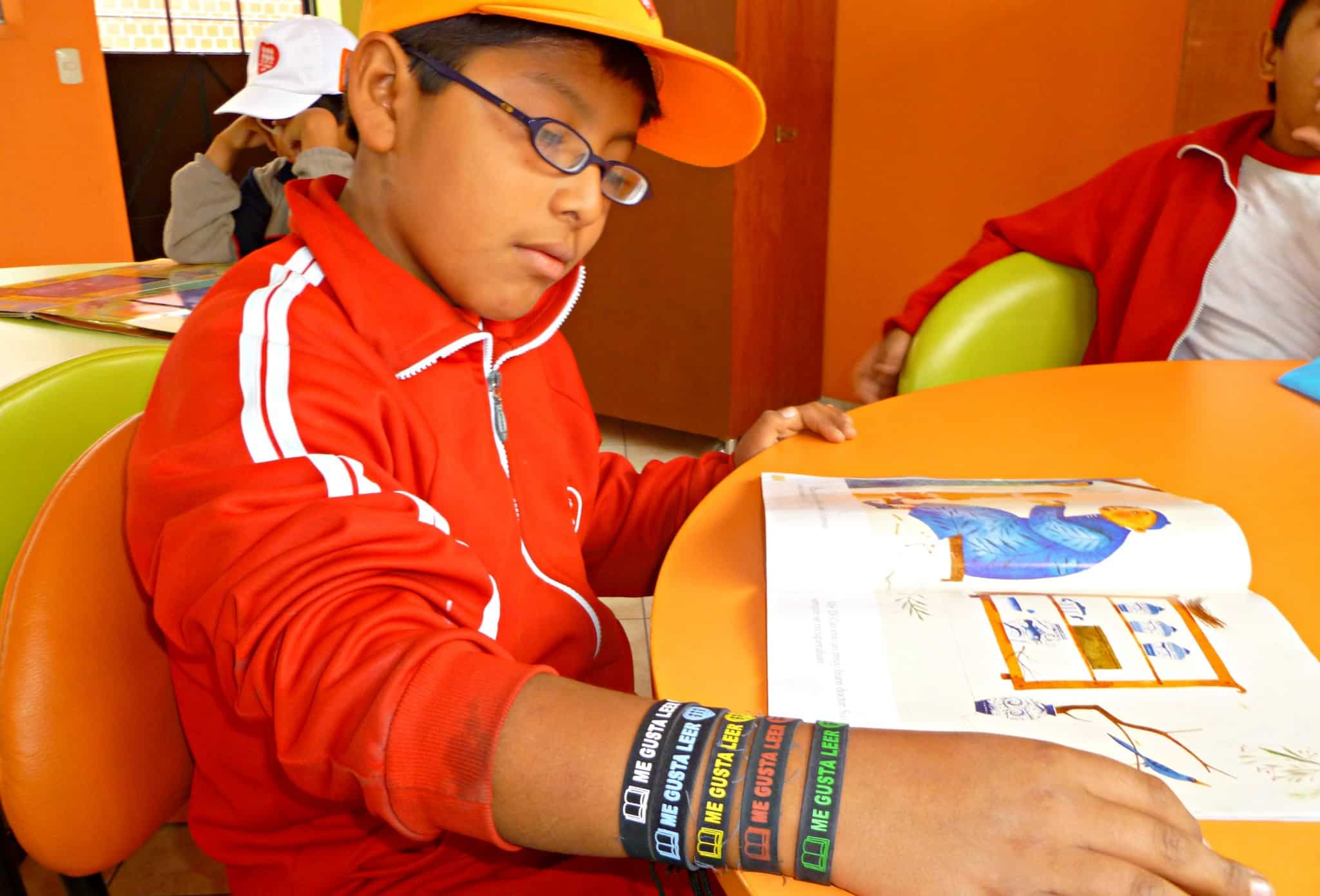We speak often of our rights: life, liberty, and the pursuit of happiness; the Bill of Rights; which (and whose) rights we ought to prioritize.
Although such “rights” language is very common, it rarely refers to the beautiful. Beauty is seen as a matter of preference. Some find it in the wide open spaces of nature, and others in the busyness of the big city. In the United States, we don’t claim a right to beauty or beautiful things.
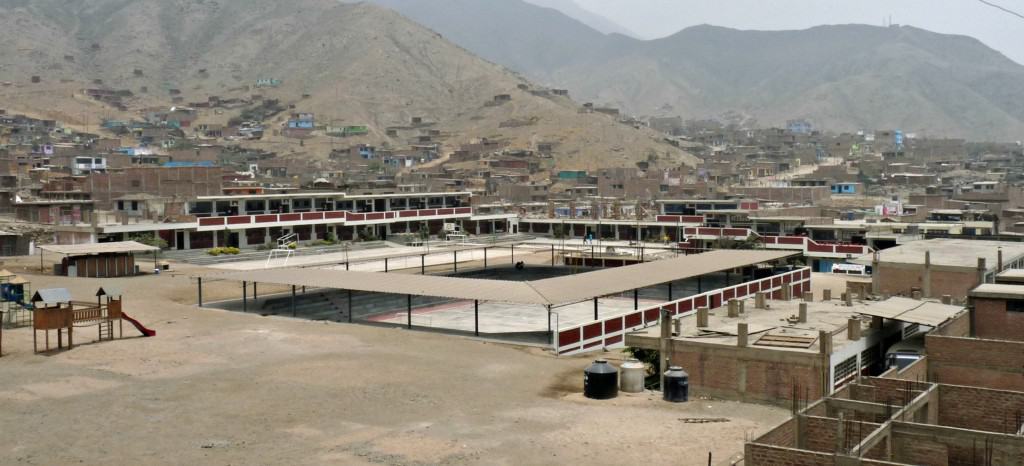
There are no paved roads in Jicamarca, but there is a beautiful school.
Last July, nine of my Jesuit brothers and I scrunched into a van in Lima, Peru. Our destination for the morning was a school on the outskirts of the city in a town called Jicamarca. What I remember about the ride is the dust. Lots of dust.
As we bumped and off-roaded our way to our destination, we were wondering “Where are we…. and why are we here?”
Eventually, the van stopped at a school. Students in red uniforms welcomed us and led us to their classroom. 35 fourth graders listened patiently as we introduced ourselves. When it was time for questions and answers, hands shot up in the air. I braced myself for questions about American cuisine and the Statue of Liberty. But that’s not what they asked about.
“Have you seen our library?”
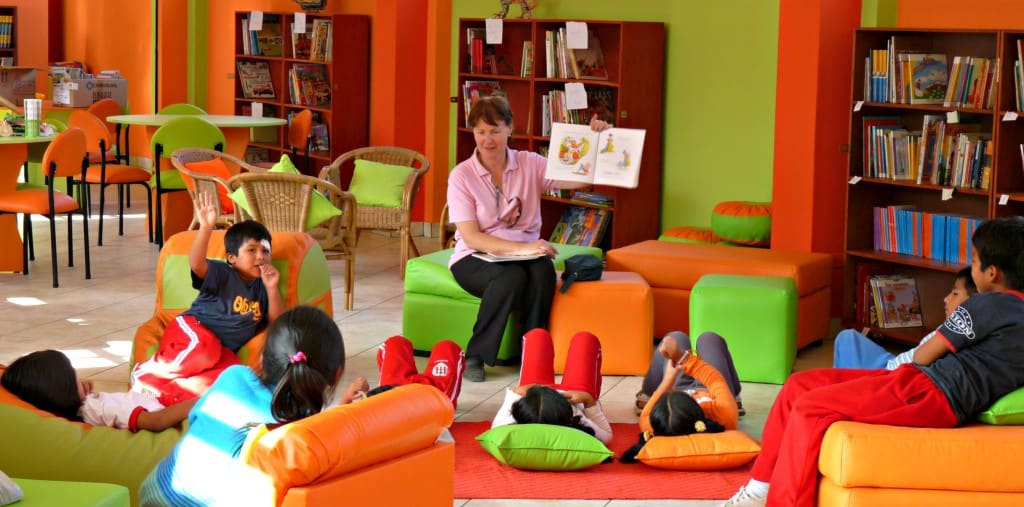
“I want our children to know they have a right to all things good and beautiful.”
Sister Patricia McLaughlin is an Irish Sister of Loreto. In 2001, when the community of Jicamarca applied to the Fe y Alegría Network, they needed a religious order to sponsor the new school. Sr. Patricia was running an all-girls prep school at the time and didn’t speak a word of Spanish. She said “yes” and became the founding principal of the school.
Her vision for the school has been simple since the beginning. “We need to believe one hundred percent in education as a means of transformation. It is the only thing that will give these children a fighting chance.”
But environmental factors can make this transformation difficult, if not impossible. Jicamarca is a place of extreme poverty where many people live in houses constructed of straw, wood or very basic brick. There is no running water or sewage facilities, and many people living near the school have no electricity. The men often work in the local brickyards or as drivers or conductors of the small local transport vans. Others go to Lima looking for work.
Sr. Patricia refuses to see this context as an impediment to offering an excellent education. She writes, “Our children may lack resources but they do not lack intelligence, talent, creativity and dreams. I would like each child to know that they too have a right to all things good and beautiful and that this isn’t only for the chosen few.”
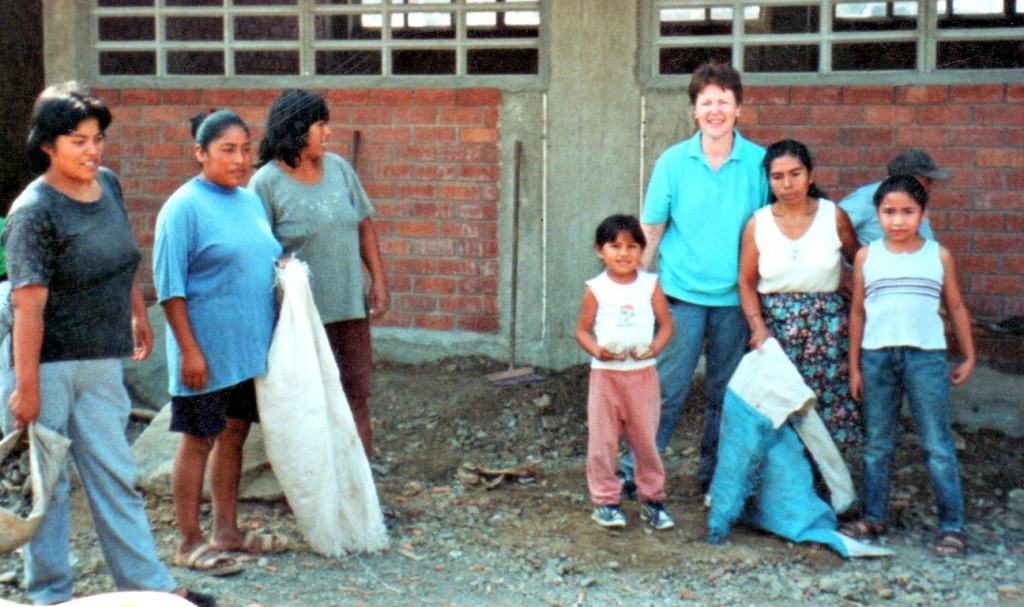
Sr. Patricia and community members
Beautiful things are nice, certainly. But what do they have to do with teaching children arithmetic, or helping them learn to read?
To Sr. Patricia, the connection is obvious.
It begins with the environment. The fourth graders were so excited to show us the library because it is beautiful. It is painted with bright greens and reds and filled with stuffed animals and beanbag chairs. What child wouldn’t be attracted to such an environment, particularly when beautiful things can be hard to come by in Jicamarca?
But a beautiful environment isn’t enough to keep a child interested in reading. So Sr. Patricia and her staff at Fe y Alegría 58 got creative. She recalls a turning point in the establishment of a culture of reading at the school:
“We developed a system where every book had a set of six to seven questions which the children answered to show that they had understood what they had read. Answering the questions quickly gained them points. When a student accumulated enough points, they received a colorful bracelet and a whole new culture of reading began.”
Each bracelet has a different color that represents a certain amount of books that the wearer has read. By incorporating these bracelets, which the children find beautiful, this Fe y Alegría school has accomplished what educators are finding increasingly difficult. This message is written on the bracelets themselves: Me gusta leer. I like to read!
Sr. Patricia says that students begin reading for the bracelets, but discover a real love for reading in the process.
“The children began reading to gain points and bracelets and ended up loving what they were reading. What child does not fall in love with Roald Dahl and Charlie and the Chocolate Factory? Now the majority of children are reading whenever they have the chance and their bracelets have become prized possessions. There are children who have read up to two or three hundred books!”
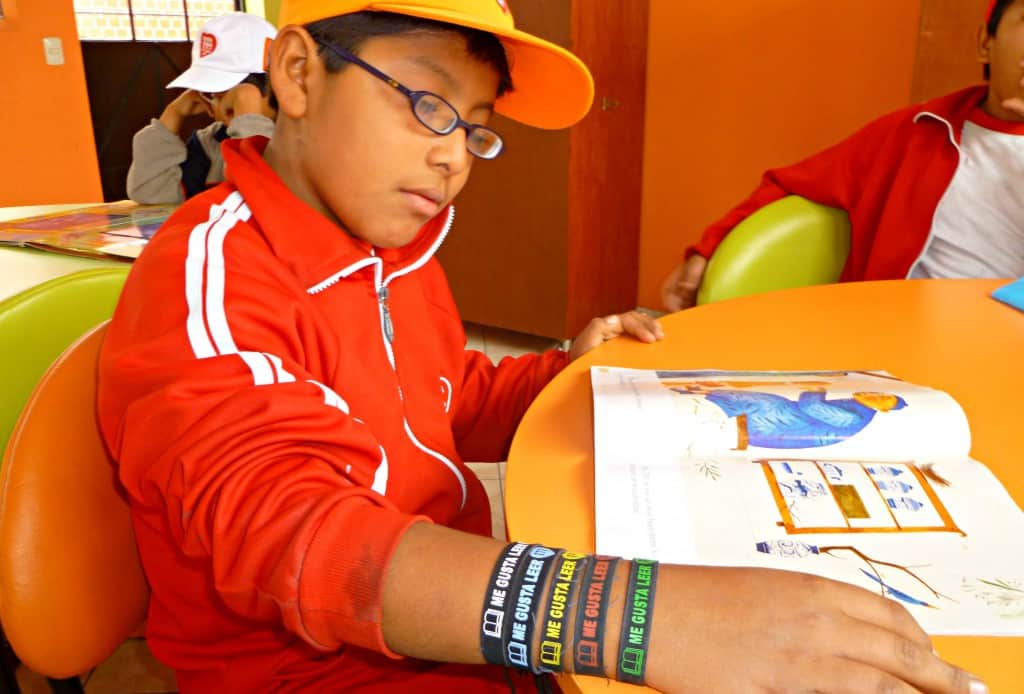
This guy must be an awesome reader.
Fe y Alegría is a network of publicly-funded schools primarily in Central and South America that are run by private organizations and communities. Begun in 1955 in Venezuela, the network now includes 20 countries and educates 1.5 million students. Their aim is “inclusive education”: making sure that the poorest and most vulnerable people have an excellent education.
In addition to high quality instruction in math and literature, students learn practical skills that may develop into career interests. As we toured the campus, we saw students baking and learning how to play the guitar.
What we saw most of all was students who were glad to be at Fe y Alegría 58. We met teachers, parents, and members of the Jicamarca community who declared that the school was a real “bright spot” in the community.
After a quick tour of the library, it’s not hard to see why. Beautiful things can have an extraordinary impact.

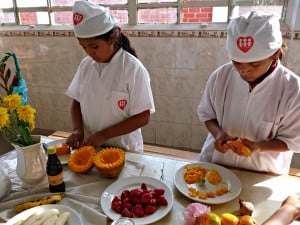 All pictures were provided by the author.
All pictures were provided by the author.

